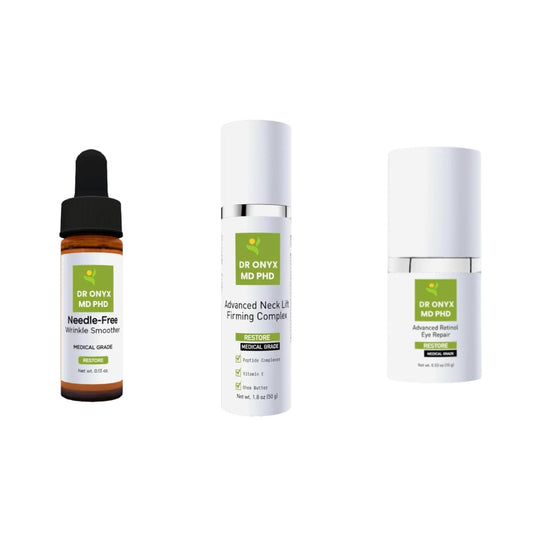10 Mounjaro Tips and Tricks for Optimal Results
If you've recently started Mounjaro (tirzepatide) for type 2 diabetes or weight management, you're likely eager to maximize its benefits while minimizing side effects. As this relatively new GLP-1/GIP medication continues to gain popularity, understanding how to use it effectively becomes increasingly important. From injection techniques to lifestyle modifications, these practical tips can help you achieve the best possible outcomes with your Mounjaro treatment.
Understanding Your Mounjaro Medication
Before diving into specific tips, it's essential to understand what Mounjaro is and how it works. Mounjaro (tirzepatide) is a dual GIP and GLP-1 receptor agonist that helps regulate blood sugar and can promote weight loss. Unlike some older diabetes medications, Mounjaro works by mimicking hormones that naturally occur in your body, helping to control blood sugar, slow gastric emptying, and reduce appetite.
Approved by the FDA in 2022, Mounjaro has shown impressive results in clinical trials for both glycemic control and weight reduction. Understanding its mechanism helps you work with the medication rather than against it, setting realistic expectations for your treatment journey.
Proper Storage Techniques
Mounjaro pens require proper storage to maintain effectiveness. Always keep unused pens refrigerated at 36°F to 46°F (2°C to 8°C). Never freeze your Mounjaro, and protect it from extreme heat. If you notice that your medication has frozen or been exposed to temperatures above 86°F (30°C), it's best to discard it and use a new pen.
Once you've started using a pen, you can keep it at room temperature (below 86°F) for up to 21 days. However, always protect it from direct sunlight. Proper storage ensures the medication remains stable and effective throughout your treatment cycle.
Understanding Dosage Progression
Mounjaro typically follows a dose escalation schedule, starting at a lower dose (usually 2.5mg weekly) and gradually increasing over time. This approach helps your body adjust to the medication and minimizes side effects. Don't rush to increase your dose faster than prescribed, even if you're eager for quicker results.
Your healthcare provider will determine when it's appropriate to increase your dosage based on your tolerance and response to the medication. Some patients may stay at lower doses longer if they experience significant side effects or achieve good results without needing higher doses. Trust the process and follow your doctor's guidance on dosage progression.
Perfecting Your Injection Technique
Mounjaro is administered as a subcutaneous injection once weekly. While the thought of self-injecting might seem intimidating at first, most patients quickly become comfortable with the process. The Mounjaro pen is designed to be user-friendly with a hidden needle that automatically retracts after use.
Choosing Injection Sites
Rotate your injection sites regularly to prevent lipohypertrophy (fatty lumps under the skin) and ensure consistent absorption. Recommended injection areas include your abdomen (staying at least two inches away from your navel), thigh, or upper arm. Create a rotation schedule and keep track of where you last injected.
Some patients find certain injection sites more comfortable than others. The abdomen typically has more subcutaneous fat and fewer nerve endings, making it less painful for many users. Experiment with different approved sites to find what works best for you while maintaining a proper rotation schedule.
Minimizing Injection Discomfort
To reduce injection pain, allow your Mounjaro pen to reach room temperature before injecting—typically 30 minutes is sufficient. Cold medication can cause more discomfort during injection. Never warm the pen using hot water, microwave, or other heating methods as this can damage the medication.
When injecting, pinch a fold of skin gently and insert the needle at a 90-degree angle. Press the button fully and hold for 5-10 seconds before removing to ensure you receive the complete dose. Some patients find that applying an ice pack to the injection area for a few minutes before injection can further reduce discomfort.
Managing Side Effects Effectively
Side effects are common when starting Mounjaro or increasing your dose. The most frequently reported include nausea, vomiting, diarrhea, and constipation. While these symptoms often improve over time as your body adjusts, there are several strategies to help manage them in the meantime.
Combating Nausea and Digestive Issues
Nausea is perhaps the most common side effect of Mounjaro. To minimize this, try eating smaller, more frequent meals rather than three large ones. Many patients find that avoiding fatty, spicy, or heavily processed foods can help reduce nausea. Staying well-hydrated is also crucial—aim for at least 64 ounces of water daily unless otherwise directed by your healthcare provider.
If nausea becomes problematic, talk to your doctor about anti-nausea medications that might help during the adjustment period. Simple remedies like ginger tea, peppermint, or over-the-counter options like Dramamine may provide relief for milder symptoms. Remember that nausea typically improves as your body adjusts to the medication.
Preventing Constipation
Constipation can occur as Mounjaro slows gastric emptying. Increase your fiber intake gradually through fruits, vegetables, and whole grains. A fiber supplement like psyllium husk may be helpful, but introduce it slowly to avoid bloating. Staying physically active also promotes healthy bowel function.
Hydration plays a crucial role in preventing constipation. The water you drink helps soften stools and makes them easier to pass. Some patients find that a daily routine of warm water with lemon in the morning helps maintain regularity. If constipation persists despite these measures, consult your healthcare provider about safe laxative options.
Optimizing Your Diet While on Mounjaro
While Mounjaro can reduce appetite and food cravings, making thoughtful dietary choices enhances its effectiveness and supports your overall health goals. The medication works best when paired with nutritious food choices that complement its effects.
Prioritizing Protein Intake
As your appetite decreases, ensuring adequate protein intake becomes increasingly important. Protein helps preserve muscle mass during weight loss and provides greater satiety than carbohydrates or fats. Aim for at least 0.8-1 gram of protein per kilogram of body weight daily, or more if you're physically active.
Good protein sources include lean meats, fish, eggs, dairy, legumes, and plant-based options like tofu. Consider starting meals with protein to ensure you meet your needs before feeling full. Some patients find that protein shakes or smoothies are helpful when appetite is significantly reduced, making it easier to consume adequate nutrition in a smaller volume.
Managing Portion Sizes and Meal Timing
Mounjaro changes how your body processes food and alters hunger signals. Listen to your body's new hunger cues rather than eating by the clock or finishing everything on your plate out of habit. Using smaller plates and bowls can help adjust to reduced portion sizes without feeling deprived.
Many patients find that eating more slowly helps them recognize fullness signals before overeating. Try putting your utensils down between bites and thoroughly chewing your food. This mindful approach to eating works synergistically with Mounjaro's appetite-suppressing effects and can help prevent uncomfortable fullness or nausea after meals.
Incorporating Physical Activity
Exercise complements Mounjaro therapy by improving insulin sensitivity, building muscle mass, and supporting cardiovascular health. However, finding the right balance is key, especially when first starting treatment or during dose increases when energy levels might fluctuate.
Starting Slowly and Building Consistency
If you're new to exercise or returning after a break, begin with gentle activities like walking, swimming, or beginner yoga. Even 10-15 minutes daily provides benefits and establishes a sustainable routine. Gradually increase duration and intensity as your energy and fitness improve.
Consistency matters more than intensity, particularly when adjusting to Mounjaro. Schedule activity at times when you typically have more energy, and consider tracking your progress to stay motivated. Many patients find that morning exercise works best, as energy levels tend to be higher earlier in the day while on GLP-1 medications.
Balancing Cardio and Strength Training
A well-rounded fitness program includes both cardiovascular exercise and strength training. Cardio activities like walking, cycling, or dancing improve heart health and burn calories, while resistance training preserves and builds muscle mass during weight loss. Aim for at least two strength training sessions weekly, focusing on major muscle groups.
As your weight decreases on Mounjaro, you may find certain activities become easier or more enjoyable. This is an excellent opportunity to explore new forms of movement that might have seemed challenging before. Remember that physical activity has benefits beyond weight management, including improved mood, better sleep quality, and reduced stress—all supportive of your overall health journey.
Tracking Your Progress Effectively
Monitoring your response to Mounjaro helps you and your healthcare provider make informed decisions about your treatment plan. Beyond the scale, several metrics can provide valuable insights into your progress.
Beyond the Scale: Comprehensive Monitoring
While weight changes are important, other measurements offer a more complete picture of your progress. Consider tracking body measurements, how your clothes fit, energy levels, blood sugar readings (if applicable), and improvements in health markers like blood pressure or cholesterol. These non-scale victories often provide motivation when weight plateaus temporarily.
Photos can be particularly valuable for noticing changes that happen gradually. Take progress pictures in similar lighting and clothing monthly, even if you don't share them with anyone. Many patients are surprised by the visible changes they notice in photos even during periods when the scale hasn't moved significantly.
Building a Support System
The journey with Mounjaro is often more successful with proper support. Whether from healthcare providers, family, friends, or online communities, having people who understand your experience can make a significant difference in long-term success.
Working With Your Healthcare Team
Maintain regular communication with your healthcare provider about your experience with Mounjaro. Be honest about side effects, challenges, and successes. Your provider can offer personalized advice, adjust your treatment plan if needed, and help you navigate insurance or access issues that might arise.
Consider asking for referrals to other specialists who might support your journey, such as registered dietitians, certified diabetes educators, or mental health professionals specializing in health behavior change. A multidisciplinary approach often yields the best results, especially for complex conditions like diabetes or obesity.
Finding Community Support
Online communities dedicated to Mounjaro users can provide practical tips, emotional support, and a sense of belonging. Look for groups moderated by healthcare professionals or with clear rules about not giving medical advice. These communities can be invaluable for day-to-day questions and shared experiences that your healthcare team might not address during limited appointment times.
Remember that while community support is valuable, individual experiences vary widely. What works perfectly for one person might not be ideal for you. Use these communities as a source of ideas and encouragement rather than as a replacement for professional medical guidance tailored to your specific situation.
By implementing these tips and tricks, you can optimize your Mounjaro experience and work toward your health goals more effectively. Remember that patience and consistency are key—the most sustainable results develop gradually as you build healthy habits that complement your medication therapy.

















